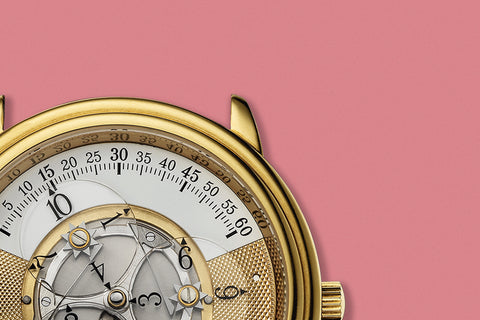Part of the neo-vintage movement of the 1990s, this Audemars Piguet Star Wheel reinvents a 17th-century method of telling time. With its intriguing and appealing design, the revival of this concept has had a strong influence on other watchmakers since.
You May Also Like
A DISCOVERY CENTURIES IN THE MAKING
Inspired by a 17th-century papal clock, the Star Wheel was unusual and, produced in small numbers, was never expected to rival the Royal Oak for popularity.
It never came close to it, either, and was discontinued within five years of its launch. However, the brand’s unique take on the wandering-hours display kept showing up sporadically in its more unusual lines, usually produced in limited numbers, all the way until 2000, the year the Le Brassus watchmakers celebrated 125 years of business.
The story goes back to the mid 17th century when the Pope was believed to have been struggling to sleep. Pope Alexander VII, newly appointed to the position in 1655, was complaining to his trusted aide, Cardinal Barberini, that the tick-tocks of the clock in his living quarters in the Vatican – seemingly louder in the dead of the night – meant he could not get a wink of sleep. What was worse, he told Barberini, was that lying there awake, he could not even check the time in the dark.
Barberini is said to have approached Rome-based clockmakers the Campani brothers, run by Giuseppe, Matteo, and Pietro Tomasso, with the dual problem. The clockmakers, inspired by the new theory of planetary motion (it was proposed only earlier in the century by astronomer Johannes Kepler), set about designing a time-telling device unlike any other. The copper dial, decorated with ornate artwork depicting the four stages of life, featured a semi-circular window across which the hour was equally divided, each quarter-hour denoted by an open-work Roman numeral. Disks denoting the hour of the day, also open-work Roman numerals, traversed the semi-circular window over the course of the hour. This was the first time anyone had seen the design that was referred to, rather romantically, as the wandering hours.

A night clock by the Campani brothers, very similar to the one designed for Pope Alexander VII, courtesy of The British Museum.
The unusual wandering-hours dial layout found limited favour with timepieces of the era. However, the first few decades of the 20th century saw renewed interest, thanks to the efforts of Robert Cart, a watchmaker in Le Locle whose eponymous manufacture had come to be known for slim but complicated movements. Among other innovations, Cart pioneered a variation of the wandering hours dial layout, a patented complication he called Heures Sautantes, or jumping hours. As the name suggests, it combined the wandering-hours arrangement with a jump hour. The hours of the day were displayed through a window at the turn of the hour. That hour window then rotated around the watch face, indicating the minutes. This dial layout was deployed by Breguet as well as Vacheron Constantin and featured in several of the brands’ pocket watches from the early 1920s and 1930s.
























































































































































































































